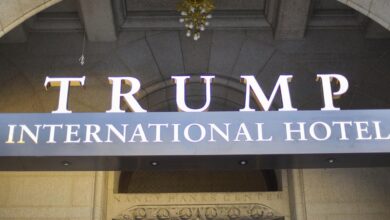
Caribbean Leaders Plot Unified Strategy
Caribbean leaders plot a unified strategy, a bold move aiming to reshape the region’s future. This ambitious plan delves into the historical context of Caribbean unity, exploring past attempts, successes, and failures. The current political climate, economic motivations, and potential strategies for unity are all carefully examined. Obstacles and potential outcomes are also considered, painting a comprehensive picture of this critical moment in Caribbean history.
The intricate web of political, economic, and social factors influencing this endeavor is laid bare. From the historical legacy of colonialism to the present-day geopolitical landscape, the analysis provides a nuanced understanding of the challenges and opportunities ahead. This initiative promises to be a significant turning point for the Caribbean, impacting everything from trade and investment to regional governance and the lives of its citizens.
Historical Context of Caribbean Unity
The Caribbean, a region brimming with diverse cultures and histories, has long grappled with the concept of unity. From the colonial past to the present day, attempts to forge a shared destiny have been met with both progress and setbacks. Understanding this complex historical tapestry is crucial for charting a path toward a more cohesive and prosperous future. The ongoing efforts to achieve regional integration reflect a continuous desire for collective strength and mutual benefit.The region’s shared colonial experience, while creating deep-seated cultural and economic disparities, also fostered a sense of shared struggle and a common desire for self-determination.
This complex interplay of factors continues to shape the region’s political and economic landscape, impacting the ongoing quest for Caribbean unity.
Early Attempts at Regional Integration
The desire for Caribbean unity emerged early in the 20th century, driven by a growing awareness of the need for collective action to address shared challenges. The establishment of regional organizations and conferences aimed at fostering economic cooperation and political solidarity were pivotal in shaping the movement for regional integration. Early initiatives, while not always successful, laid the groundwork for future endeavors.
Key Figures and Events in the Movement
Numerous individuals played crucial roles in advocating for Caribbean unity. Figures like Eric Williams, the first Prime Minister of Trinidad and Tobago, championed the idea of a Caribbean federation, while others focused on specific aspects of regional integration, such as economic development or political cooperation. Significant events, such as the formation of the Caribbean Free Trade Association (CARIFTA) and later CARICOM, demonstrated a commitment to shared progress and regionalism.
These individuals and events illustrate the evolving commitment to achieving unity.
Caribbean leaders are strategizing for a unified front, and this could open up exciting possibilities. It’s interesting to see how this aligns with the upcoming AmaWaterways first Black Heritage cruise , highlighting the rich cultural heritage of the region. This initiative, by Caribbean leaders, promises to foster greater tourism and economic growth.
Evolving Geopolitical Landscape
The geopolitical landscape of the Caribbean has been profoundly influenced by external powers and internal conflicts. The Cold War’s impact on the region, coupled with the rise of global trade and economic integration, significantly altered the political and economic dynamics. The region’s relationship with major global players, including the United States and European nations, has had a direct impact on its capacity to achieve regional unity.
The Caribbean’s role in global trade and its vulnerability to external economic forces are significant factors in this context.
Comparative Analysis of Caribbean Political and Economic Systems
The Caribbean islands boast a rich tapestry of political and economic systems, reflecting their unique histories and diverse populations. While many countries share a common heritage from colonialism, their paths diverged after independence. Some adopted democratic systems, while others have faced challenges in consolidating democratic institutions. Similarly, economic strategies have varied, with some nations focusing on tourism, others on agriculture, and still others on a mix of industries.
Understanding these differences is critical for crafting effective strategies for regional cooperation and development.
Major Caribbean Conferences and Summits
| Conference/Summit | Date | Outcome |
|---|---|---|
| First Conference of Caribbean and Latin American States | 1960 | Initiated discussions on regional cooperation and development. |
| Establishment of CARIFTA | 1968 | Led to increased trade and economic cooperation among member states. |
| Establishment of CARICOM | 1973 | Further integration of Caribbean economies and political systems. |
| Various CARICOM Summits | 1970s-2020s | Ongoing discussions and efforts to strengthen regional unity and address shared challenges. |
The table above provides a concise overview of major conferences and summits related to Caribbean unity, highlighting their dates and general outcomes. These gatherings underscore the region’s commitment to forging a stronger collective identity.
Caribbean leaders are reportedly plotting a unified strategy for economic growth, focusing on sustainable tourism. This comes at a time when the industry is facing some significant shifts, including the recent departure of a key figure in the region’s cruise sector, Veitch, who left NCL after 8 years. While this change might seem disruptive, it could also be an opportunity to re-evaluate and strengthen the region’s overall tourism approach.
The leaders are likely to address these developments as part of their unified strategy.
Current Political Climate in the Caribbean
The Caribbean, a region steeped in shared history and facing common challenges, is navigating a complex political landscape. Regional cooperation, while a long-held aspiration, faces persistent obstacles. Understanding the current political leaders, their approaches to regional issues, and the broader political dynamics is crucial for comprehending the opportunities and hurdles in achieving a unified strategy.The political climate in the Caribbean is marked by a diversity of political leanings, ranging from progressive to conservative, and from left-leaning to right-leaning.
This diversity, while reflecting the region’s varied societies and histories, can also present challenges to forging a cohesive regional identity and agenda. The political climate also reflects the influence of global forces and the specific economic and social circumstances of individual island nations.
Current Political Leaders and Stated Positions on Regional Cooperation
Caribbean leaders hold a variety of views on regional cooperation, some openly advocating for stronger integration, while others prioritize national interests. Their stated positions often depend on the specific issue at hand and the perceived benefits for their nation. For instance, some leaders might emphasize economic integration while others prioritize security cooperation.
Major Political Challenges and Opportunities Facing Caribbean Nations
Caribbean nations face numerous challenges, including economic vulnerability, dependence on tourism, and susceptibility to natural disasters. Opportunities exist in diversifying economies, fostering entrepreneurship, and strengthening regional institutions. These opportunities require innovative approaches and a collective will to overcome historical and present-day obstacles.
Caribbean leaders are reportedly plotting a unified strategy to address regional economic challenges. This comes at a time when significant shifts are occurring in global maritime operations, like the recent news that Aker Yards is changing its name ( aker yards name goes away ). These changes highlight the interconnectedness of various sectors and the need for Caribbean nations to adapt and collaborate effectively to thrive in this new landscape.
Role of External Actors in Caribbean Politics
Global powers and international organizations play significant roles in shaping the political landscape of the Caribbean. These actors can influence policy decisions, provide financial assistance, and offer technical support. However, the influence of external actors can sometimes be perceived as a form of interference in national affairs. This requires careful consideration by Caribbean leaders to ensure that external support aligns with national interests and regional unity goals.
Examples of Recent Political Developments Impacting Regional Unity
Recent political developments, such as regional disputes over maritime boundaries, economic disparities, and differing approaches to environmental protection, can sometimes strain regional unity. These instances highlight the necessity for effective dialogue and compromise to address these issues constructively. For instance, disagreements over resource management can hinder efforts to promote a shared economic agenda.
Comparison of Political Leanings of Caribbean Leaders
| Leader | Country | Political Leaning | Stated Position on Regional Cooperation |
|---|---|---|---|
| Example Leader 1 | Example Country 1 | Center-Left | Advocates for deeper regional economic integration |
| Example Leader 2 | Example Country 2 | Center-Right | Prioritizes national security and economic sovereignty |
| Example Leader 3 | Example Country 3 | Left-Wing | Focuses on social justice and regional solidarity |
Note: This table provides a simplified overview and does not represent a comprehensive analysis of all Caribbean leaders. The political leanings and stated positions can vary depending on the specific context and issue. Further research is necessary to obtain a more detailed and accurate picture.
Economic Motivations for Unity
The Caribbean, a tapestry of islands with shared history and vibrant cultures, faces significant economic challenges. While possessing rich natural resources and a strong tourism sector, these nations often struggle with economic disparities, dependence on external markets, and limited access to capital. A unified strategy, with shared economic goals and coordinated policies, can potentially unlock substantial opportunities for the region.
Economic Disparities Among Caribbean Nations
Significant economic disparities exist among Caribbean nations. Some islands benefit from more diversified economies and greater foreign investment, while others rely heavily on tourism and remittances, making them vulnerable to external shocks. Variations in infrastructure, access to technology, and human capital contribute further to the divide. These disparities create an uneven playing field, hindering regional cooperation and collective progress.
Factors such as differing levels of development, varying degrees of vulnerability to external shocks, and varying resource endowments contribute to these inequalities.
Potential Economic Benefits of a Unified Strategy
A unified strategy offers the potential for substantial economic benefits. A coordinated approach to trade negotiations, investment attraction, and tourism promotion can yield greater bargaining power and increased foreign direct investment. Joint marketing efforts can expand the reach of Caribbean destinations, boosting tourism revenue. Moreover, shared infrastructure projects and resource management can enhance regional competitiveness and resilience.
Shared resources and expertise can leverage collective strengths, fostering growth and prosperity.
Role of Trade, Investment, and Tourism in Regional Development
Trade liberalization within the region can foster greater economic integration and specialization. Increased trade among Caribbean nations can lead to lower transaction costs, economies of scale, and access to wider markets. Attracting foreign investment is crucial for boosting economic growth and creating jobs. A unified front can attract larger investment deals, providing vital capital for infrastructure development and diversification.
Tourism, a vital sector for many Caribbean nations, can benefit from a unified marketing strategy, promoting the region as a whole, enhancing the attractiveness of Caribbean destinations.
Potential Economic Challenges That Might Hinder Unity
Despite the potential benefits, several economic challenges could hinder unity. Political differences, differing levels of economic development, and varying degrees of vulnerability to external shocks can create friction and disagreements. The desire to maintain sovereignty and control over economic policies can present obstacles to regional cooperation. Protectionist tendencies and historical trade disputes could also hinder the formation of a unified economic bloc.
Moreover, lack of trust and historical animosities can impede the progress of economic unity.
Potential Economic Gains and Losses from a Unified Strategy
| Economic Aspect | Potential Gains | Potential Losses |
|---|---|---|
| Trade | Increased market access, lower transaction costs, economies of scale | Potential for trade wars, loss of some domestic industries |
| Investment | Increased foreign direct investment, access to capital for infrastructure development | Potential for exploitation of resources, loss of control over economic decisions |
| Tourism | Enhanced marketing efforts, greater reach, increased revenue | Potential for competition among destinations, uneven distribution of benefits |
| Infrastructure | Shared projects, improved connectivity, reduced costs | Potential for unequal distribution of resources, political disputes |
Potential Strategies for Unity: Caribbean Leaders Plot A Unified Strategy

Caribbean nations, facing shared challenges and opportunities, must explore innovative and practical strategies for achieving unity. This necessitates a multifaceted approach that acknowledges the unique contexts of each island nation while fostering a shared vision for the region’s future. Effective unity will require navigating complex political landscapes and economic disparities while capitalizing on regional strengths.Regional unity is not a utopian ideal; it’s a pragmatic necessity for collective progress.
Caribbean nations, historically interconnected through shared history, culture, and geography, stand to benefit significantly from a coordinated approach to issues like climate change, economic development, and security. Successful implementation of a unified strategy will hinge on clear communication, mutual respect, and a commitment to collaborative decision-making.
Approaches to Achieving a Unified Strategy
Various strategies can be employed to achieve a unified strategy. These include fostering strong regional institutions, promoting inter-island trade, and encouraging joint ventures in critical sectors like renewable energy and tourism. Strategic partnerships with global organizations and nations can bolster regional influence and access to resources. A critical element is the establishment of clear communication channels and protocols for conflict resolution.
- Fostering Strong Regional Institutions: Strengthening existing regional organizations like CARICOM and establishing new bodies focused on specific issues is crucial. These institutions should have the authority to enforce decisions and allocate resources effectively. This involves building capacity within these institutions to ensure they are equipped to handle the complexities of regional governance and collaboration.
- Promoting Inter-Island Trade and Investment: Reducing trade barriers and fostering investment flows between Caribbean nations is essential. This includes implementing policies that encourage cross-border trade, establishing common standards, and providing support for small and medium-sized enterprises (SMEs) to expand their reach. A focus on promoting regional supply chains can significantly boost economic activity and interdependence.
- Joint Ventures in Critical Sectors: Collaborating on projects in sectors like renewable energy, tourism, and technology can leverage economies of scale and share expertise. Joint ventures can attract foreign investment and create new employment opportunities, fostering regional growth and resilience.
- Strategic Partnerships with Global Organizations and Nations: Building alliances with international organizations and influential nations can amplify the Caribbean’s voice on the global stage and provide access to resources and expertise. This includes advocating for the region’s interests in international forums and securing financial support for development projects.
- Establishing Clear Communication Channels and Protocols for Conflict Resolution: Effective communication is essential for navigating disputes and disagreements. Establishing clear protocols for conflict resolution, including mediation and arbitration mechanisms, is critical for maintaining peace and stability within the region.
Role of Regional Institutions and Organizations
Regional institutions and organizations play a vital role in facilitating unity. CARICOM, for example, serves as a platform for dialogue, negotiation, and collaboration. However, strengthening these organizations to effectively address regional challenges is paramount. This involves enhancing their decision-making processes, increasing funding, and ensuring greater representation from member states.
- CARICOM’s Role: CARICOM, as the primary regional organization, plays a critical role in fostering cooperation and unity. Strengthening its mandate to address regional issues is crucial, including economic integration, environmental protection, and security. Its effectiveness relies on member states’ commitment to shared goals and active participation in regional initiatives.
- Potential for New Regional Bodies: Establishing new specialized bodies to address specific regional challenges, like climate change or cybersecurity, could enhance CARICOM’s effectiveness. These bodies could provide focused expertise and resources to tackle issues that transcend national borders.
- Capacity Building: Investing in the capacity of regional institutions is essential for their effectiveness. This includes providing training and resources to support regional decision-making, enhance technical expertise, and strengthen administrative capacity.
Comparison of Regional Integration Models
Different models of regional integration exist globally, offering valuable insights and lessons for the Caribbean. Examining these models can help tailor a suitable approach to regional unity.
| Integration Model | Description | Example | Strengths | Weaknesses |
|---|---|---|---|---|
| Confederation | A loose union of independent states with a shared government for certain purposes. | The United States of America (early stages) | Preserves national sovereignty. | Limited central authority, potential for disagreements. |
| Federation | A more integrated union with a shared government structure. | The United Arab Emirates | Stronger central authority, economies of scale. | Potential for conflict over power sharing. |
| Economic Union | Focuses on economic integration, often with a common market and customs union. | The European Union (economic aspects) | Enhanced trade, investment, and economic growth. | Potential for disparities in member states’ development. |
Potential Legal and Institutional Frameworks
A unified strategy requires a robust legal and institutional framework. This involves establishing clear rules and procedures for decision-making, dispute resolution, and resource allocation. The framework should address the specific needs of Caribbean nations and respect national sovereignty.
Caribbean leaders are apparently plotting a unified strategy for economic growth, which is great to see. While they’re strategizing, maybe a little downtime in some of the gorgeous Czech Republic spa towns, like those featured in a healthy dose of czech republic spa towns , would be a welcome break. Hopefully, this unified strategy will bring positive change and prosperity to the region.
It’s all about finding the right balance, after all.
- Legal Frameworks: Developing specific legal frameworks, agreements, and treaties related to regional trade, security, and environmental protection is necessary. These frameworks must be tailored to the unique circumstances and challenges of the Caribbean.
- Institutional Structures: Designing institutional structures with clear roles and responsibilities for regional bodies and member states is crucial. These structures should facilitate efficient decision-making and resource allocation while respecting the diversity of the region.
- Dispute Resolution Mechanisms: Establishing robust dispute resolution mechanisms, including mediation and arbitration, is vital for addressing conflicts peacefully and effectively. This will ensure that disagreements are handled constructively, avoiding escalations and maintaining regional harmony.
Challenges and Obstacles to Unity

Caribbean nations, despite shared history and cultural ties, face significant hurdles in forging a unified strategy. The path towards a cohesive and prosperous Caribbean community is fraught with complex internal and external pressures. Navigating these challenges requires a deep understanding of the historical baggage, political intricacies, and economic disparities that have shaped the region’s trajectory. Addressing these obstacles head-on is crucial for realizing the potential benefits of a unified approach.
Political Differences and Internal Divisions
Political differences and internal divisions remain significant impediments to Caribbean unity. Varying ideologies, political systems, and leadership styles often lead to disagreements on crucial policy matters. Differing levels of political maturity and experience across the region can also hinder the development of a common vision and strategy. The absence of a strong, unifying political force capable of transcending national interests can impede progress towards a unified approach.
Economic Disparities and Interests
The Caribbean region exhibits a wide spectrum of economic development. Some nations are more industrialized and diversified than others, leading to differing economic priorities and interests. These disparities can create tensions and disagreements over resource allocation and policy direction within a unified framework. Furthermore, varying levels of economic dependence on external partners can create conflicts in negotiating unified trade agreements and economic policies.
Historical Baggage and Past Conflicts
Historical baggage and past conflicts, often rooted in colonialism and its lingering effects, continue to influence relations between Caribbean nations. Resentments, disputes over territories, and historical grievances can create deep-seated mistrust and impede the development of a unified strategy. For instance, long-standing territorial disputes can hinder the creation of common security mechanisms and hinder economic cooperation.
Security Concerns and External Pressures
Security concerns and external pressures also pose considerable challenges to Caribbean unity. Threats like natural disasters, crime, and political instability can distract from the pursuit of a unified approach. External pressures, including geopolitical tensions and the influence of powerful global actors, can complicate efforts to forge a cohesive regional identity. A unified strategy must consider the unique security needs of each nation while promoting a collective approach to regional security issues.
Caribbean leaders are reportedly plotting a unified strategy for economic growth, a crucial step towards regional prosperity. Meanwhile, the grand opening of the Avanti Museum Quarter in Amsterdam, a vibrant hub of art and culture, offers a fascinating parallel. Perhaps the collaborative spirit evident in this new Amsterdam development can inspire similar unity amongst Caribbean leaders as they craft their economic strategy.
Table of Potential Challenges and Suggested Solutions
| Challenge | Potential Solution |
|---|---|
| Political Differences | Establish a regional forum for dialogue and consensus-building, promoting cross-national understanding and cooperation. |
| Economic Disparities | Implement targeted economic development programs focused on bridging the gap between nations, potentially through regional infrastructure projects and investment initiatives. |
| Historical Baggage | Promote historical reconciliation and dialogue to address past grievances, fostering a shared understanding of the region’s past. |
| Security Concerns | Establish a regional security force and coordination mechanisms to address transnational crime and natural disasters, fostering a sense of collective security. |
| External Pressures | Strengthen regional diplomatic efforts to negotiate favorable trade agreements and alliances, fostering collective bargaining power in the global arena. |
Potential Outcomes of a Unified Strategy
A unified Caribbean strategy, while facing numerous hurdles, holds the potential to reshape the region’s trajectory. From bolstering economic resilience to enhancing regional security, the possibilities are vast. This exploration delves into the multifaceted outcomes, considering the economic, security, and social ramifications, as well as the impact on the Caribbean’s global standing.
Economic Impacts of Unity
A unified Caribbean economy can leverage collective bargaining power in global markets. Pooling resources and expertise could lead to economies of scale, allowing the region to negotiate better trade deals and attract foreign investment. Joint ventures in sectors like renewable energy, tourism, and agriculture could foster innovation and create more jobs. For instance, a unified approach to sustainable tourism could create a competitive edge, attracting environmentally conscious travelers.
Security Implications of Unity
Regional security is significantly enhanced through unity. A collective defense strategy could deter external threats, such as piracy or trafficking, more effectively than individual island nations could. Shared intelligence and resources can bolster the capacity to combat crime and violence across the region. Furthermore, a unified Caribbean force could contribute to a more secure maritime environment, crucial for trade and tourism.
Social Development Outcomes
A unified strategy offers opportunities for improved social development across the region. Shared educational resources and standards can lead to better opportunities for Caribbean citizens. Joint initiatives in healthcare, particularly for addressing common health challenges, can create more equitable access to quality care. Moreover, a unified approach to disaster preparedness and response can reduce the devastating impact of natural calamities on vulnerable communities.
Global Role of a Unified Caribbean
A unified Caribbean voice in global affairs can increase the region’s influence and leverage. Speaking with one voice on issues of global concern, such as climate change, fair trade, and sustainable development, would allow the Caribbean to advocate more effectively for its interests. This could lead to greater recognition and support for the region’s specific needs and challenges on the global stage.
For example, a unified stance on climate change mitigation and adaptation would grant the region a stronger voice within international forums.
Impact on Regional Governance
A unified strategy could lead to improved regional governance. Harmonized policies and regulations can streamline trade, investment, and other crucial economic activities. A shared legal framework can improve cross-border cooperation and reduce bureaucratic hurdles. A unified approach to regional security, as discussed above, can enhance the efficacy of governance in ensuring safety and stability.
Benefits for Caribbean Citizens
A unified Caribbean strategy promises significant benefits for citizens. Increased economic opportunities, improved access to quality education and healthcare, and enhanced regional security are all potential outcomes. Moreover, greater political influence on the global stage can lead to a better future for Caribbean citizens. A unified response to climate change, for example, can protect coastal communities from the rising tide of sea-level rise and extreme weather events.
| Potential Impacts of Caribbean Unity | Positive Impacts | Negative Impacts |
|---|---|---|
| Economy | Increased bargaining power, economies of scale, better trade deals, investment attraction, job creation | Potential for economic imbalances, loss of individual island nation autonomy, challenges in coordinating diverse economies |
| Security | Deterrence of external threats, improved intelligence sharing, enhanced maritime security, collective defense | Potential for conflicts of interest, challenges in maintaining consensus on security issues, resource allocation difficulties |
| Social Development | Improved education, healthcare, disaster preparedness, social equity | Potential for bureaucratic inefficiencies, conflicts in social priorities, challenges in coordinating diverse social needs |
| Global Affairs | Increased influence and leverage, stronger advocacy for regional interests, better representation in global forums | Potential for marginalization in global affairs, challenges in navigating conflicting international priorities, possible diplomatic inconsistencies |
| Regional Governance | Streamlined policies, improved cross-border cooperation, reduced bureaucratic hurdles | Potential for loss of local decision-making power, challenges in harmonizing diverse interests, difficulties in achieving consensus |
| Citizens | Increased economic opportunities, improved social services, enhanced regional security, improved global influence | Potential for economic inequality, loss of local cultural identity, possible bureaucratic issues |
Illustrative Examples
Caribbean unity, while a noble aspiration, faces numerous hurdles. Understanding past successes and failures, as well as successful models elsewhere, provides valuable lessons. Examining these examples can illuminate potential paths forward and highlight crucial factors for success.
Hypothetical Scenario of Successful Regional Cooperation, Caribbean leaders plot a unified strategy
Imagine a Caribbean nation facing a severe hurricane season. Instead of individual responses, member states pool resources and expertise. A joint task force, composed of personnel from across the region, swiftly deploys aid to affected islands. Teams of engineers coordinate rebuilding efforts, leveraging shared knowledge and resources. The swift, collaborative response significantly reduces the recovery time and minimizes long-term damage.
This coordinated effort not only saves lives but also strengthens regional bonds and demonstrates the tangible benefits of cooperation.
Regional Initiatives Promoting Unity
Several past initiatives have fostered a sense of unity among Caribbean nations. These initiatives, while not always perfectly successful, represent attempts at collaboration and integration.
Table: Past Regional Initiatives
| Initiative | Features | Outcomes |
|---|---|---|
| Caribbean Community (CARICOM) | Established in 1973, focusing on economic integration, political cooperation, and social development among member states. | Achieved significant progress in areas like trade liberalization, but faced challenges in fully realizing the potential of economic integration. |
| Organization of Eastern Caribbean States (OECS) | Established in 1981, encompassing a smaller group of Caribbean nations with a focus on closer economic and political ties. | Demonstrated greater integration success in specific sectors like tourism and infrastructure development compared to CARICOM. |
| Caribbean Development Bank (CDB) | Established in 1970 to promote economic development and infrastructure projects across the region. | Successfully provided financing and technical assistance, but challenges remain in attracting private investment. |
Unsuccessful Regional Cooperation Attempt
One historical example of a less successful regional cooperation attempt involves a failed effort to create a unified currency in the 1980s among some Caribbean nations. The project faced challenges in harmonizing economic policies and controlling inflation. Disagreements among member states on economic policies and differing levels of economic development hindered the implementation of the plan.
Successful Regional Integration Model in Another Part of the World
The European Union provides a compelling model of regional integration. Through the creation of a common market, the EU has fostered economic growth and political stability. The elimination of trade barriers, the establishment of a common currency (the Euro), and the development of shared institutions have strengthened the economic and political bonds among member states. However, the EU’s experience also highlights the complexities and challenges involved in achieving regional unity.
The EU model, while successful, is complex and might not be directly applicable to the Caribbean context due to the unique political and economic landscapes of the Caribbean.
Final Conclusion
In conclusion, the Caribbean leaders’ unified strategy represents a pivotal moment for the region. The potential benefits of a unified front are significant, but the path is fraught with challenges. This comprehensive analysis highlights the complexities involved, from historical baggage to external pressures. Ultimately, the success of this endeavor hinges on the willingness of Caribbean nations to collaborate and overcome their differences.
The future of the Caribbean hangs in the balance.
FAQ Compilation
What are some key historical events that have influenced the pursuit of Caribbean unity?
Past attempts at regional integration, such as the Caribbean Community (CARICOM), have been shaped by historical events, including independence movements and economic disparities. These efforts, while not always successful, have laid the groundwork for the current initiative.
What are the potential economic benefits of a unified Caribbean market?
Increased trade, investment, and tourism could potentially bolster the region’s economy. A unified strategy could create a larger, more competitive market for Caribbean goods and services, leading to economic growth and development.
What role do external actors play in the Caribbean’s pursuit of unity?
External actors, including global powers and international organizations, can influence the Caribbean’s political and economic landscape. Understanding their role is crucial for navigating the complexities of regional integration.
What are some potential security concerns that might hinder the pursuit of unity?
Existing geopolitical tensions and historical disputes could pose challenges. The focus on security concerns is vital for the success of the plan.






